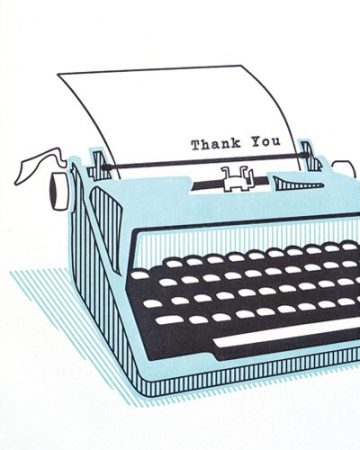 Are You a Writer with Needs? SFWC17 Writers
Are You a Writer with Needs? SFWC17 Writers
Did you attend the San Francisco Writer’s Conference with me? Did you leave absolutely exhilarated to start your next project? Me, too. Still need more help chasing your dreams? I am sharing what worked for me here.
If you have the itch to write your first bestseller, here is STEP 1: Book your seat for the next San Francisco Writer’s Conference every year in February. https://sfwriters.org/
We faithful attendees already know that this is the premiere event to actually light that fire under one’s arse. After four luxe days at the Mark Hopkins, you will return home desperate to write in your own blood if all of your quill ink has run dry.
The energy is infectious. If you are a writer, or know a writer, pass this along. This is one of the BEST conferences in the country. A couple of years ago, R.L. Stine was our keynote, giving everyone in the room…..yes, goosebumps!
The water’s warm. If you’ve got a book burning in you, (even better, a series!) then you have nothing to lose by jumping in. Either you’re a writer, or you’re not. This will help you find the answers.
If you missed my 2-minutes at the mic when I shared everything I have taken away from SFWC after attending nearly every year since 2007, then here is a little recap of gems that have been very helpful to me.
1. Make Your First Impression Count.In 2007, I arrived with my first independently published book in hand. Heroes Don’t Always Wear Capes is the coming-of-age story that follows the underdog student from pre-school through twelfth grade on her search for an inspiring teacher. For the educators you know, there is no better gift of appreciation. |
|
After I attended Linda Lee’s session on platform building and learned how essential it is for authors to have a website, I had her construct mine.
|
2. Ask for what you need from table mates—and be genuine in your offer to help them, too.Every time someone was generous enough to ask what they could do for me, I had an answer ready. When I met a teacher from a neighboring district—coincidentally enough—she asked how she might help. I wondered if she would introduce my Heroes book to her principal—she did one better, putting it in the hands of her Superintendent who bought a copy for every hero teacher in his district. A few years later, I had a second book 9 Realities of Caring for an Elderly Parent: A Love Story of a Different Kind. Powerful reading if you are the adult child returning home to care for a parent when they can no longer care for themselves. Lots of tips, and solid reviews. What I needed was an endorsement from a medical professional. Lo and behold, it was my seat mate who agreed (evidently he has written endorsements before as a highly regarded doctor familiar with dementia). Every author needs to build platform. Social media likes can really be ramped up at a conference. Ask people to follow you on Facebook, twitter, Goodreads, Instagram, and where ever else you need to increase your presence. Be kind, follow them as well. I recommend avoiding small talk, and instead, open your conversations with, “What do you still need, how can I help?” The frenetic pace of the conference means you might not run into that same person again. Grab your chance now.
|
3. One Contact Begets Many.Here is proof that a single connection can snowball into many, many opportunities for your future writing career. Linda Lee generously connected me with Robin Fahr, a cable TV talk-show host who interviewed me about 9 Realities and now I had footage on my site. But, Robin Fahr was not just a talk-show host—she had built a reputation as a PR gal for decades and had contacts with all of the powerhouse media outlets in SF. She scored hour-long interview formats for me on both KQED/Michael Krasny and KGO/Ronn Owens, plus KTVU/Bay Area People. She also got me a national radio tour in select regions and it was the best experience I could have had. I would imagine this nice lady would be willing to point you in the right direction if you sought her out in my Press Room. |
| From this one interview, my public speaking opportunities increased to include a keynote invitation for a regional education conference, which ultimately lead to the Bill and Melinda Gates Ed Foundation national keynote I gave to 500 teacher leaders. An amazing opportunity which I have blogged about before: https://stefaniashaffer.com/why-do-teachers-love-bill-and-melinda-gates/ I am now considered a resource on both Education and Elder Care topics. |
4. Those nuggets from keynote speakers are golden.Guy Kawasaki was the keynote. It didn’t matter that I was not familiar with him because I soon became a big fan! He wrote a bestseller on how to market your self-published book to millions. He was funny and insightful, but he mentioned he had also used Penny. I didn’t know Penny then, but years later this nugget would connect me with her. |
|
When I returned last year to SFWC, I actually sat in on a presentation done by the Penny. It was sizzling! Red-hot marketing tips I could try on my own….or with her expertise.
What I needed was to breathe new life into 9 Realities. I had done all that I could on my own. Her first suggestion when we met—take all of the How-to’s and To-do’s and create a workbook version as a companion to the Memoir. |
Ta-da! My third book was born and so was a comprehensive and extended marketing campaign with Penny, the super-seller and marketing guru extraordinaire.  |
|
And from Penny, I was introduced to the life-saver I am still using, my VA who helps tackle a lot behind the scenes so I am freed up to WRITE. If you are that desperate writer who wishes for a mini-me but has no idea who to trust or where to look for a Virtual Assistant, I will share Erin’s contact info if you reach out to me through my Press Room email address. I can’t share with a hundred people—how would she ever have time for me?—but I am happy to share with the first ten writers:-) In the meantime, if you are feeling generous and you are a writer wondering what I might still need from you? Glad you asked:-) Would you please consider following me on Goodreads? Stefania Shaffer is currently at work on a 4-book MG series about little mischief-makers in elementary school and how they grow forward. Beta-readers for the first two books are eagerly anticipating the release of all four books in late 2017. |
















 Fan Mail from Carol
Fan Mail from Carol Are you concerned about what will happen when your elderly parents can no longer care for themselves? No one gives us caregiving advice when we’re younger. As we get older, so do they, and often, it falls to us to figure out what to do, how to handle it. No one has prepared us.
Are you concerned about what will happen when your elderly parents can no longer care for themselves? No one gives us caregiving advice when we’re younger. As we get older, so do they, and often, it falls to us to figure out what to do, how to handle it. No one has prepared us. I am no stranger to caregiving.
I am no stranger to caregiving.




 This is my Guest Blog appearing on Rita Morgan’s Blog-Not Just the Kitchen created for baby Boomer Women. Here is the link to the original Blog appearing on Not Just the Kitchen:
This is my Guest Blog appearing on Rita Morgan’s Blog-Not Just the Kitchen created for baby Boomer Women. Here is the link to the original Blog appearing on Not Just the Kitchen:



 How to Care for an Elderly Hoarder?
How to Care for an Elderly Hoarder?